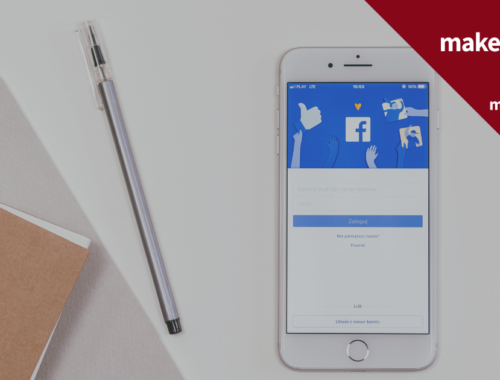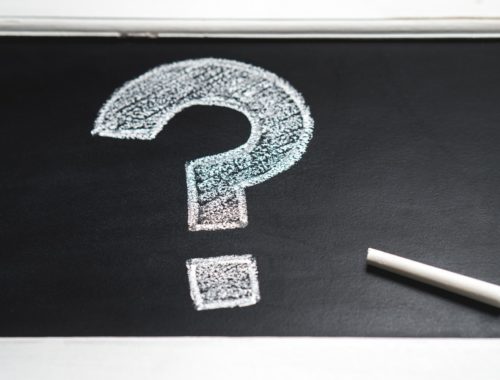
(Not)easy ways of communication and how to use them correctly
Last Updated on May 3, 2019 by Lucie Klabanová
(For czech version of the post click here.)
Nowadays we have unlimited possibilities how to communicate. We do not have to be thinking of distance. From the other part of the world we can speak the same way like sitting next to each other. Modern tools turned the whole world into one living room.
But what if for this reason we lose the ability to communicate? Can we correctly judge which form of communication is the right one and most effective in each situation?
Many times, I have been frustrated by making “enemy” after exchange of flow of emails. Feeling that either there is a dummy on the other side or I am completely out. Not reaching any satisfactory result and boss pushing me for solution.
Do you also get crazy by re-sending emails 3 (or more) times to move things forward? Does it make you nervous when your messenger keeps beeping, because colleagues are sending you long information in parts? When you are not able to get a proper cooperation from your headquarter?
Therefore, I decided to summarize the most used forms of communication in a corporate company and remind us how those should be used and combined. Than everything will flow more smoothly and the results come soon.

Written communication that was originally replacing the classical letters. And to use the main advantage: quickness. But during time the “letter officiality” disappeared. We use it rather as messenger, click fast, do not read what we wrote, do not think about if the text is understandable for the recipient. Therefore, the number of emails increases and the effectivity decreases.
We can access it nonstop. If we want.
Today it is not “in” to be on the email 24/7. Lot of leaders did realize that emails have changed from helper to wrecker, they take too much of our time compared to their benefit. And they simply limited their usage. They work on email for example only one hour per day. By this they actually return to the original version – official letter, which does not get lost on the post office. :-)
But careful. Five-pages-emails are not welcomed, no one has time to read them. Email is not a book, is it? Be brief, accurate and go directly to the point. If you think more explanation is needed make a call afterwards.
Messengers
What’s up, Facebook messenger, … there are plenty. For PCs and mobiles. Ideally for both.
Their idea is simple: quick question – quick answer. At the moment when writing email is not needed because it would take too long and even time to pick up the phone is longer than the time needed to get your answer through messenger.
The question is: do we really use it only then?
Confess it, did you ever spend long minutes writing on messenger to a colleague in the next office, while going there would save half of the time?
Messengers are one of the most disruptive elements. Every beep of message rips you out of concentration. Precious minutes needed to get back to what you were doing are costly.
Phone
Sometimes we tend to forget this effective form of communication. Over all the emails and messengers we somehow became lazy to pick up the phone.
While EU has some time ago managed to prevent telephone companies from taking nonsense money for calls inside EU, the biggest barrier fell down. And hearing someone is certainly better than just reading his or her email. There are not so many misunderstandings caused by one side writing and meaning something while the other side reading something a bit different. It is a middle step towards personal meeting.
On the other hand, also calls are disruption so we should use them clever. Before calling someone, we should think about it and prepare. To prevent finishing the call with half of the things and need to call back again.

Meetings
Form of communication that sounds nearly like a magic formula. :-)
In the post about meetings I mentioned that from my experience many meetings are not effective. Wasted time of many people, unstructured discussions, often no conclusion.
But personal meetings have something that long-distance communication miss. You look into the eyes of your colleagues. Personal element is what can add huge value, if used well.
But you should always think twice if you really need to meet. Could you achieve the expected result elsewise?
If you come to a conclusion that meeting is the only chance, try to keep the “golden rules” I wrote in the post:
- be clear on the target of the meeting and expected output.
- plan it in advance, invite attendees, inform them about agenda
- keep the agenda
- presentations are not always needed
- make sure everyone is prepared
- make meeting minutes including tasks, deadlines and responsible persons
- do not forget follow up
For more on meetings organization read this post>>.
Skype
Or net-meeting, face time, and plenty others. They are actually a distant meeting. If you are lucky and have sufficient connection. The rules here are the same ones as for meeting. And few more:
- check the connection in advance
- be ready with alternative solution (phone)
- be ready (at least mentally :-) ) that you might be repeating everything twice because on the other side they will not understand.

“Make a face course”
Copywriters will excuse me for this inexpert term. :-) This communication form is a bit “mine”, but when I explain what it is all about you will see that you surely use it, too. :-)
This way of communication is very useful specifically in corporate companies. At least in the Italian ones with which I have most experience.
Big companies have hundreds or thousands of employees. Most of the people in headquarter (but also in the subsidiaries) have tens or hundreds of contacts with whom they communicate, mainly by email. Thanks God for email signatures, at least they can read from which position is the unknown face on the other side asking them for help.
And to turn the unknown face into connection of name to real person – therefore there is “make a face course”.
Once in few months you just visit the HQ, prepare a list of names with whom you communicated during last week and then spend the whole day searching at which table in this huge building are those people sitting. When you take with you chocolates or small Becherovka bottles and while introducing yourself: “Hello I am the Lucie from Prague who asked you for this and that and here is a small thank you for your help.” you give it to him or her, you are the winner.
The answer for next email comes in twenty minutes instead of standard three days, next meeting during the company event turns into enthusiastic: “Aaa, Hello Lucie!” and introduction to another colleague into: “OK, you are the Lucy I heard about.”
So that’s about it. I have been practicing this way of communication for more than twelve years and am becoming a real expert. ;-)
We live in the information age. We use daily many times more information than some years ago. Their gaining and sharing are becoming a specific discipline. Communication is the base of everything. Correct form of communication not only saves a lot of time and stress, but also helps the people’s satisfaction. On the contrary, wrong way of communication is one of the biggest demotivators.
Hand on heart – do you use the communication properly or you have some space for improvement? :-) Share it with us in the closed group.
Lucie Klabanová
I am a mentor, leader and pioneer of business process improvement. I help companies and individuals to find effective ways to achieve their goals. More about me you can find here>>
You May Also Like

Facebook – cursed and beloved. And why I do not fear anymore they know everything about me.
May 10, 2019
Motivation. Always look for answer on WHY?
May 4, 2018



One Comment
Pingback: